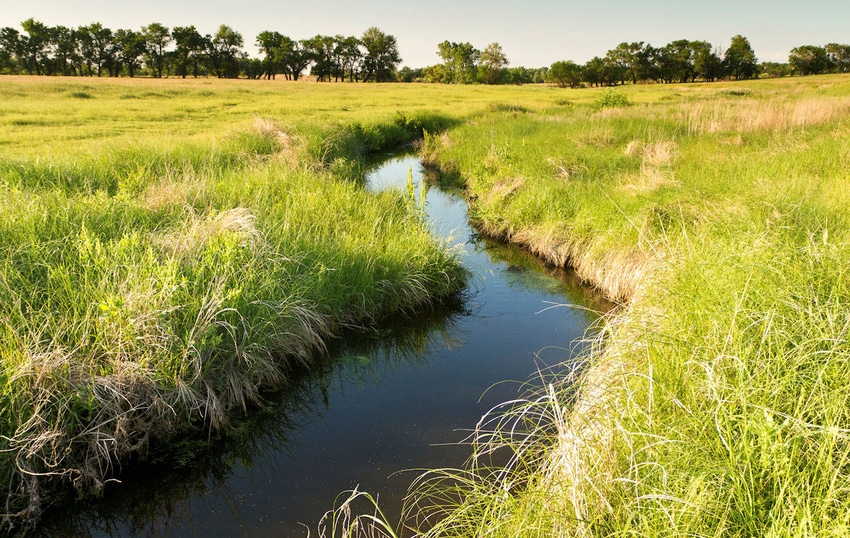USDA targets $33m to improve water quality
High-priority watersheds targeted for NRCS's National Water Quality Initiative.
December 6, 2016

Agriculture Secretary Tom Vilsack announced an investment of more than $33 million in 197 high-priority watersheds across the country to help landowners improve water quality through the National Water Quality Initiative (NWQI) of the U.S. Department of Agriculture's Natural Resources Conservation Service (NRCS).

The National Water Quality Initiative helps farmers and ranchers implement voluntary conservation practices, such as nutrient management, cover crops, conservation cropping systems, filter strips, terraces and buffers, which protect and improve water quality where it is needed most.
The NWQI helps farmers and ranchers implement voluntary conservation practices, such as nutrient management, cover crops, conservation cropping systems, filter strips, terraces and buffers, which protect and improve water quality where it is needed most. Conservation practices enhance agricultural productivity and profitability while also improving water quality by enhancing soil health and optimizing the use of agricultural inputs.
"USDA is committed to working hand in hand with farmers, ranchers and landowners to address water quality issues and provide the tools necessary to ensure clean, safe water for communities and wildlife," Vilsack said. "This latest investment is yet another example of how voluntary, incentive-based conservation programs are benefitting both producers and our natural resources."
This year, NRCS added 42 new watersheds to the NWQI and selected 21 watersheds for new assessment projects. These assessment watershed projects span 17 states and include a variety of land uses and water quality issues. NRCS will provide resources for these assessment projects to leverage existing plans, data and information and fill gaps needed to complete watershed assessments and develop outreach plans. Experience and data gained from several studies, including the Conservation Effects Assessment Project, have shown that improvements in water quality are more likely to be detected when conservation systems are placed in the most vulnerable areas of a watershed.
The goal of the NWQI is to implement conservation practices within a local area to protect water bodies within priority watersheds. NRCS works closely with conservation partners and state water quality agencies to select watersheds where on-farm conservation can deliver the greatest benefits for clean water. State water quality agencies also work to align U.S. Environmental Protection Agency funding with these priority watersheds.
This targeted approach to improve water quality is working across the country. Conservation work on seven watersheds in Texas contributed to positive results and improving trends in water quality in Chambers Creek. With continued conservation efforts, Chambers Creek will not be added to the state's Clean Water Act list of impaired waterbodies due to agricultural impacts.
Since 2012, conservation systems have been placed on almost 600,000 acres in priority watersheds through the NWQI, which is supported by approximately $125 million in USDA investments. Now in its sixth year, the NWQI has expanded to include more small watersheds across the nation, and it builds on efforts to deliver high-impact conservation in areas such as the Mississippi River basin, Gulf of Mexico, Chesapeake Bay and Great Lakes.
You May Also Like


.png?width=300&auto=webp&quality=80&disable=upscale)
